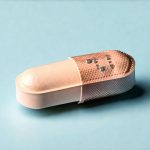Hormonal intrauterine devices (IUDs) have become increasingly popular as a long-acting reversible contraceptive method, offering convenience and high efficacy for women seeking reliable birth control. However, beyond their primary function, these devices interact with the body’s hormonal system, leading to a range of physiological effects that can extend to various organ systems, including the urinary tract and bladder. Understanding how hormonal IUDs influence bladder function is crucial for both healthcare providers and individuals considering this contraceptive option, as it allows for proactive management of potential side effects and informed decision-making. This article will delve into the complex relationship between hormonal IUDs and bladder health, exploring mechanisms, common symptoms, and strategies for addressing any associated challenges.
The impact on the bladder isn’t necessarily a direct consequence of physical pressure from the device itself, although that is sometimes considered in differential diagnosis. Instead, it largely stems from the progestin released by the IUD – typically levonorgestrel – which can influence hormonal balances and subsequently affect bladder function. These effects can vary considerably between individuals, depending on factors like pre-existing conditions, sensitivity to hormones, and the specific type of IUD used. It’s important to remember that most women experience no significant bladder issues with a hormonal IUD, but awareness is key for those who might be susceptible or notice changes after insertion.
Bladder Function & Hormonal Influence: The Core Relationship
The bladder’s functionality isn’t solely neurological; it’s deeply intertwined with the endocrine system. Estrogen and progesterone, two key hormones in the female reproductive cycle, play significant roles in maintaining healthy bladder function. Estrogen, for instance, supports the integrity of the urethral lining and helps regulate detrusor muscle activity (the muscle that contracts to empty the bladder). Progesterone’s role is more complex; it can influence bladder sensitivity and potentially contribute to changes in urinary frequency. Hormonal IUDs introduce a consistent dose of progestin into the uterine cavity, which gets absorbed systemically to varying degrees – this alters the natural hormonal environment and can impact these delicate processes.
The released progestin doesn’t necessarily replicate the cyclical fluctuations of naturally occurring progesterone; it provides a continuous, low-dose exposure. This constant level can disrupt the established hormonal balance within the bladder tissues and surrounding structures. For some women, this disruption manifests as changes in urinary frequency or urgency. Others might experience alterations in bladder capacity or even develop stress incontinence—the involuntary leakage of urine during activities that increase abdominal pressure (like coughing, sneezing, or exercise). It’s crucial to note that these effects aren’t universal and are often mild to moderate.
The degree to which the progestin impacts a woman’s bladder also depends on individual sensitivity. Some women have more sensitive bladders naturally, making them more prone to experiencing changes with hormonal fluctuations. Pre-existing conditions like overactive bladder (OAB) or pelvic floor dysfunction can also exacerbate these effects. Additionally, the dosage of progestin released by different IUD brands varies, potentially influencing the severity of any associated symptoms. Therefore, a personalized approach is essential when evaluating and managing bladder-related concerns in women using hormonal IUDs.
Common Bladder Symptoms Associated with Hormonal IUDs
Many women who experience bladder changes after IUD insertion don’t immediately connect it to their contraceptive method. This is partly because the symptoms can mimic those of a urinary tract infection (UTI) or other common bladder problems. Recognizing potential links allows for quicker investigation and appropriate management. Here are some frequently reported symptoms:
- Increased Urinary Frequency: Feeling the need to urinate more often than usual, even if you’re not drinking excessive fluids.
- Urinary Urgency: A sudden, strong urge to urinate that’s difficult to control.
- Stress Incontinence: Leaking urine during physical activity or when coughing/sneezing. This isn’t always a new problem but can be exacerbated by the IUD.
- Nocturia: Waking up frequently at night to urinate.
- Dysuria (Painful Urination): Although less common and should prompt investigation for UTI, some women report mild discomfort or burning sensation during urination.
It’s vital to differentiate these symptoms from a genuine UTI. A UTI typically involves additional symptoms like fever, flank pain, and cloudy or foul-smelling urine. If you suspect a UTI, seek medical attention promptly. However, if your primary symptom is increased frequency, urgency, or mild discomfort without other signs of infection, the hormonal IUD should be considered as a potential contributing factor. A healthcare provider can help determine the cause through a thorough evaluation and appropriate testing.
Addressing Bladder Symptoms: Management Strategies
Managing bladder symptoms related to hormonal IUDs often involves a multi-faceted approach. It’s rarely about removing the IUD immediately, but rather about implementing strategies to mitigate the effects and improve bladder control. Here’s a breakdown of potential solutions:
-
Lifestyle Modifications:
- Fluid Management: Adjusting fluid intake – avoiding excessive caffeine and alcohol, which are bladder irritants – can help reduce frequency and urgency.
- Bladder Training: Practicing timed voiding (urinating at scheduled intervals) can gradually increase bladder capacity and improve control.
- Pelvic Floor Exercises (Kegels): Strengthening the pelvic floor muscles helps support the bladder and urethra, reducing stress incontinence. These exercises should be performed correctly for optimal results; a physical therapist specializing in pelvic health can provide guidance.
-
Medical Evaluation: A healthcare provider can rule out other causes of bladder symptoms and assess the severity of the issue. This might involve:
- Urinalysis: To exclude UTI.
- Post-Void Residual (PVR) Measurement: To determine if you’re completely emptying your bladder.
- Urodynamic Testing: More comprehensive testing to evaluate bladder function and identify any underlying issues.
-
IUD Reassessment: In some cases, switching to a lower-dose IUD or considering alternative contraceptive methods may be necessary if symptoms are severe and unresponsive to other interventions. This decision should always be made in consultation with your healthcare provider. They can weigh the benefits of continued contraception against the impact on bladder health.
Long-Term Considerations & Research Gaps
While many women adapt to minor bladder changes associated with hormonal IUDs, long-term effects are still being investigated. Most studies focus on short-to-medium term outcomes. There’s a need for more research evaluating the potential for chronic bladder dysfunction or pelvic floor weakness in women using these devices over extended periods (5+ years).
Furthermore, individual responses to progestin vary significantly. Genetic factors and pre-existing hormonal imbalances may play a role in determining susceptibility to bladder symptoms. Understanding these nuances could help personalize contraceptive choices and optimize management strategies.
Finally, it’s important to emphasize the importance of open communication between women and their healthcare providers. Early identification of bladder symptoms and proactive management can significantly improve quality of life and prevent complications. A collaborative approach is essential for ensuring that hormonal IUDs remain a safe and effective contraceptive option for all women. How to flush bacteria can help with UTI concerns, and understanding acidic foods affect bladder health is vital for overall care. For those experiencing discomfort related to temperature changes, it’s useful to know cold weather affects the bladder too.





















